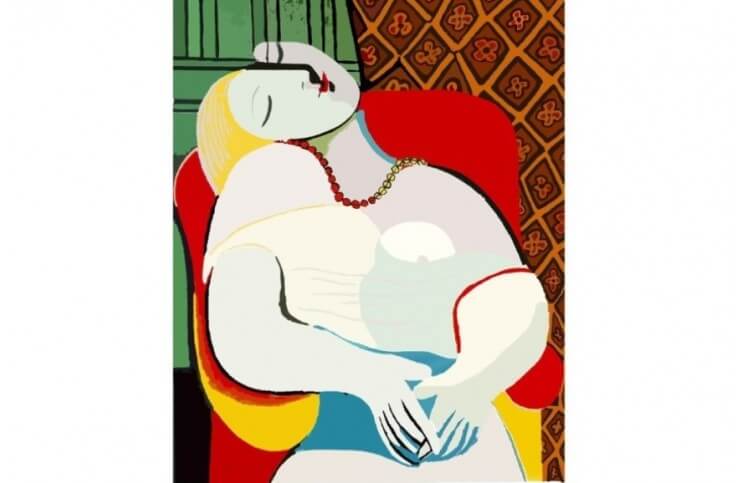
These Are the Most Famous Pablo Picasso Paintings, According to the Internet
It’s no simple task to quantify the most famous Pablo Picasso paintings. Pablo Picasso (otherwise known by his full baptismal name, Pablo Diego José Francisco de Paula Juan Nepomuceno de los Remedios Crispín Cipriano de la Santísima Trinidad Ruíz y Picasso) is listed in the Guinness Book of World Records as history’s most prolific professional painter. He created between 1,300 and 1,900 paintings between the time of his first art classes at age 7 and his death at 91. Most remarkable however isn’t the number of Picasso’s paintings, but how many are considered masterworks. Realizing that no Picasso top-10 list can be uncontroversial, our humble attempt includes famous works from each of his many phases, shining light on the entirety of his impressive career.
The Blue Period (1901 - 1904)
This era is so named for the blue hues prevalent in so many of Picasso’s paintings from the time. Picasso attributed his choice to paint only in blues to the depression he felt after the death of his friend Carlos Casagemas, who shot himself in the head at a Paris café. One of Picasso’s most beloved works in blue is The Old Guitarist, which depicts a gaunt, elderly man in rags seated on the ground playing a guitar.
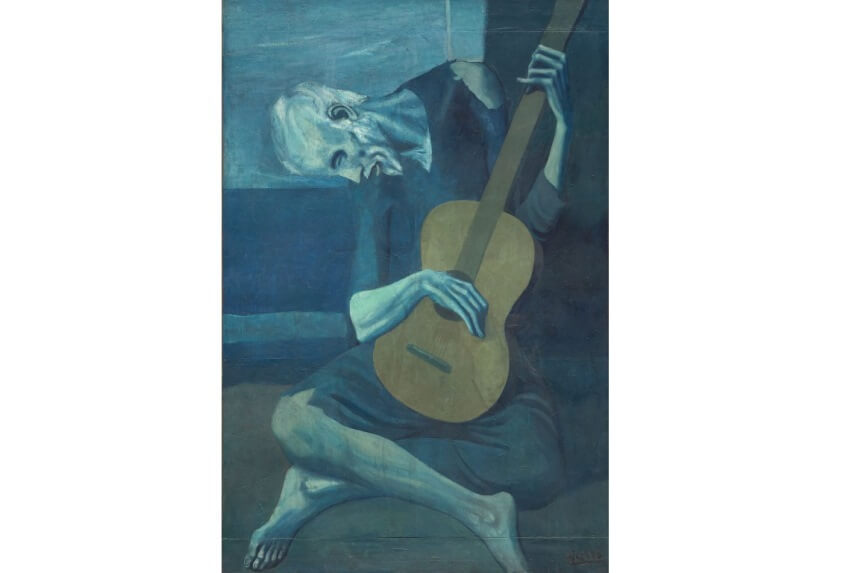
Pablo Picasso - The Old Guitarist, 1903. Oil on panel. 122.9 cm × 82.6 cm. The Art Institute of Chicago. © 2019 Estate of Pablo Picasso / Artists Rights Society (ARS), New York
The Rose (Pink) Period (1904 – 1906)
In 1904, Picasso fell in love with Fernande Olivier, and altered the direction of his style in two profound ways. First, in a transition from grief to romance, he stopped painting in blue hues and shifted to shades of pink. Second, he transitioned away from meticulous renderings of the human form toward more stylized human depictions. The most famous example from this period is Boy with a Pipe.
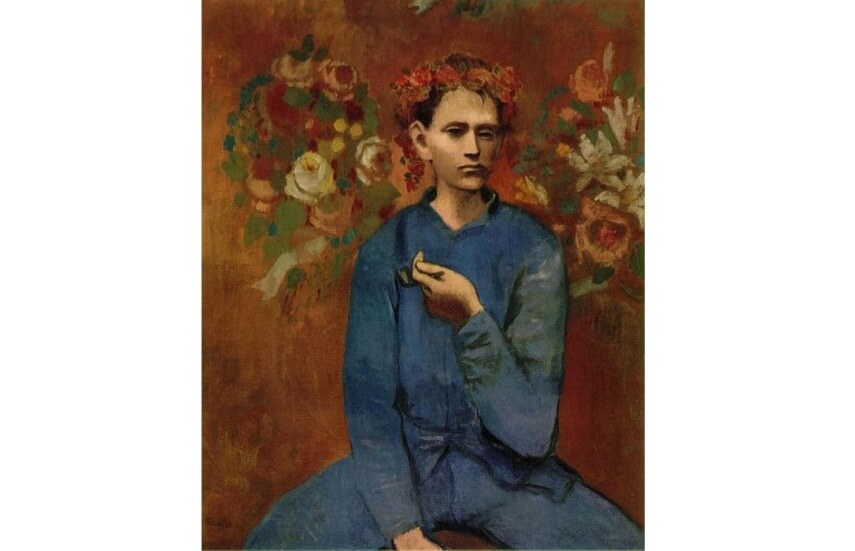
Pablo Picasso - Garçon à la Pipe (Boy with a Pipe), 1905. Oil on canvas. 100 cm × 81.3 cm. Helen Birch Bartlett Memorial Collection. 1926.253. © 2019 Estate of Pablo Picasso / Artists Rights Society (ARS), New York
African Period (1907 – 1909)
Influenced by the works of African folk artists, in particular, their masks, Picasso released himself from the need to represent human faces in a traditional manner. Simultaneously, he became inspired by the flatness of the later works of Paul Cézanne, who died in 1906. During this time of rapid experimentation, Picasso significantly reduced the visual language of his paintings, leaning ever more toward abstraction. The most significant painting from this period is Les Demoiselles d'Avignon, which is considered proto-Cubist, as it contains all of the essential elements that would eventually come to define that style.
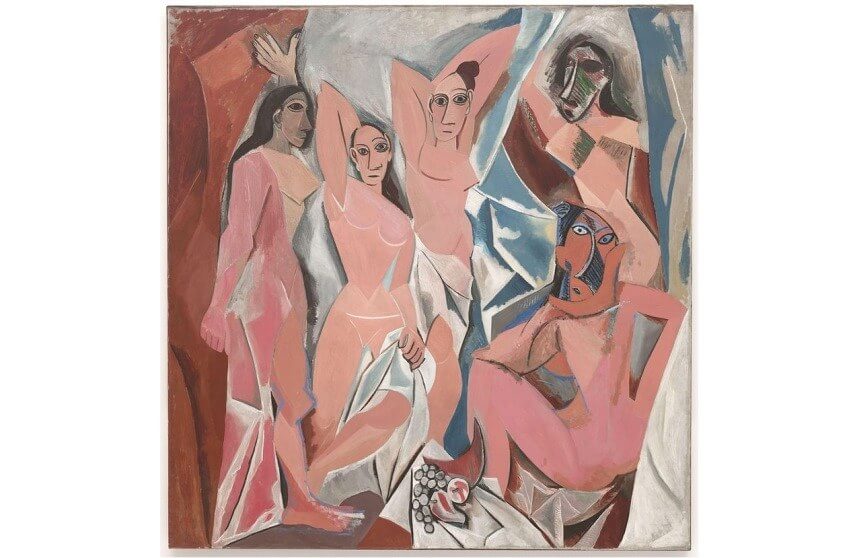
Pablo Picasso - Les Demoiselles d'Avignon, 1907. Oil on canvas. 243.9 cm × 233.7 cm. Museum of Modern Art, New York. © 2019 Estate of Pablo Picasso / Artists Rights Society (ARS), New York
Cubism & Collage (1908 – 1912)
Cubism was one of the most influential movements in the history of abstract art, and Picasso is considered the inventor of the style, which combined two-dimensionality with the use of multiple perspectives and a reduction of forms to geometric shapes. In addition to inventing Cubism, Picasso and his contemporary Georges Braques simultaneously began experimenting with adding detritus such as shredded paper, string, and fabric to their works. One of Picasso’s most famous works from this time, Still Life with Chair Caning, in addition to being a seminal Cubist work, also constitutes the invention of Collage.
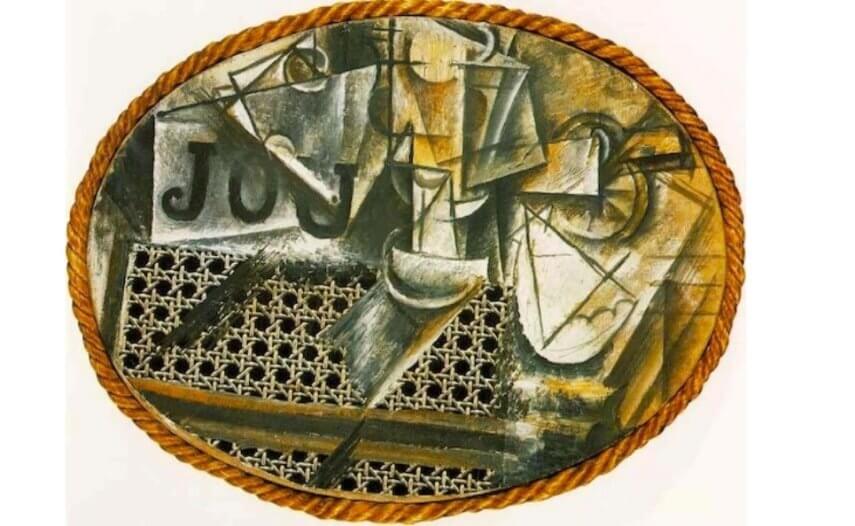
Pablo Picasso - Still Life with Chair Caning, 1912. Oil on oilcloth over canvas edged with rope. 29 × 37 cm. Musée Picasso. © 2019 Estate of Pablo Picasso / Artists Rights Society (ARS), New York
Neo-Classicism (1918 - 1928)
In 1918, shortly before the end of World War I, Picasso married his first wife, Olga Khokhlova. Olga was a ballet dancer, whom Picasso had met while he was designing sets and costumes for a production of Parade. The post-war social circles Picasso and Olga traveled in contributed to another evolution in Picasso’s works, as he gravitated away from Cubism and back toward a more classical style of painting (although he returned to Cubist tendencies throughout the rest of his career). A perfect example of this evolution in style is the painting Picasso made of his new wife in 1918.
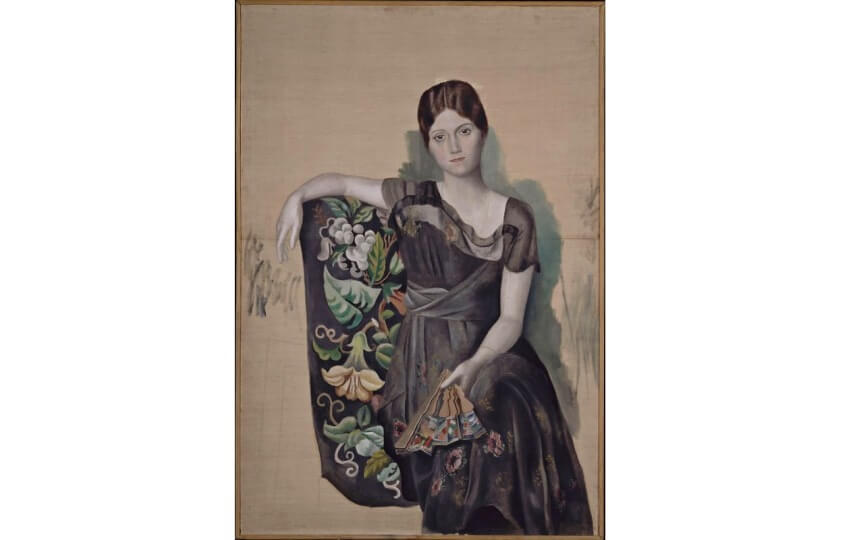
Pablo Picasso - Portrait d'Olga dans un fauteuil (Portrait of Olga in an Armchair), 1918. Oil on canvas. 130 x 88.8 cm. Musée Picasso Paris, Paris, France. © 2019 Estate of Pablo Picasso / Artists Rights Society (ARS), New York
Surrealism (1928 - 1948)
Beginning in the early 1920s, the field of Surrealism began to flourish in all of the arts. Like many painters of the time, Picasso was deeply interested in Surrealist theories, which attempted to reconcile humanity’s dream life with reality. Some of Picasso’s early Surrealist works are included in what some call his “Bone Period,” in which he represented human figures as reminiscent of grotesque collections of bone fragments.

Pablo Picasso - Figures at the Seaside, 1931. Oil on Canvas. © 2019 Estate of Pablo Picasso / Artists Rights Society (ARS), New York
Other paintings Picasso made during this time explored new directions in abstraction, including the simplification and distortion of figures and faces. One of his most famous paintings from this period is called The Dream, a sexual depiction of the artist’s mistress. This era also saw Picasso’s interest increase in the subject of the Minotaur. Over 30 years, from 1928 to 1958, Picasso painted an enormous number of paintings and drawings incorporating Minotaur, evidently entranced by the subtext of this creature’s nature as a half-human/half-beast prisoner of a Labyrinth.
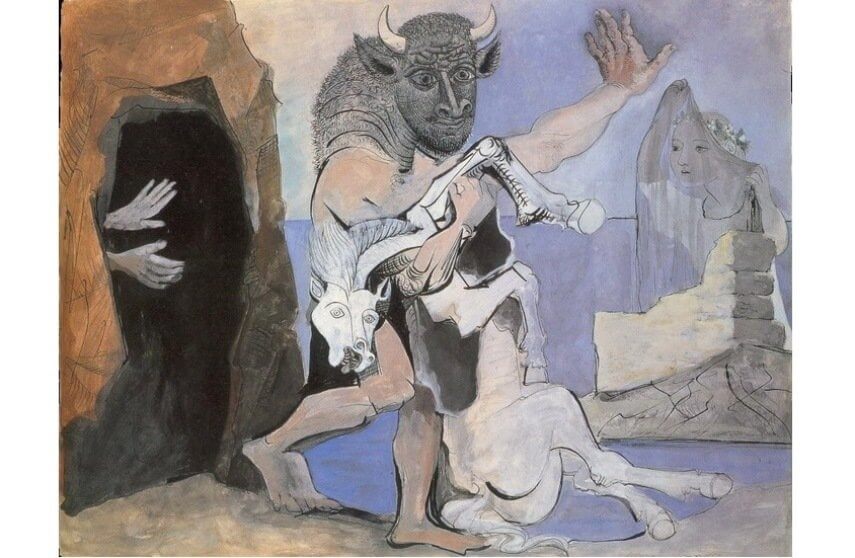
Pablo Picasso - Minotaur With Dead Horse In Front Of A Cave Facing A Girl In Veil, 1936. Gouache, Indian ink, paper. 65.6 x 50.4 cm. © 2019 Estate of Pablo Picasso / Artists Rights Society (ARS), New York
Guernica (1937)
From 1936 to 1939, Spain was in a state of civil war between Nationalist and Republican forces. The Nationalists were aligned with Fascist powers in Germany and Italy. In spring of 1937, German and Italian airplanes bombed the Basque village of Guernica at the request of Spanish Nationalists. This was the first time a modern air force attacked an unarmed civilian population. Earlier that year, the Spanish Republicans had commissioned Picasso to paint a mural for the 1937 World’s Fair in Paris. The work Picasso created for the fair responded to the bombing. Titled Guernica, it shows heaps of twisted bodies in agony among urban ruins. It’s considered his masterpiece. The work mixes various aesthetic approaches, from Cubism to Neo-Classicism to Surrealism. Its use of black, white and grey evokes news photography, referencing his early use of news clippings in his collages and blurring the border between art and journalism.

Pablo Picasso - Guernica, 1937. Oil on canvas. 349 cm × 776 cm. Museo Nacional Centro de Arte Reina Sofía. © 2019 Estate of Pablo Picasso / Artists Rights Society (ARS), New York
Post-WWII
Until his death in 1973 Picasso continued making art, often returning to the methods and styles he had explored earlier in his life. He had become the world’s most famous living artist and was commissioned to create everything from large-scale public works to common housewares. In 1953, he met the woman who would become his second wife, Jacqueline Roque. Picasso was 72 at the time; Jacqueline was 27. His painting of her from 1954 is an example of the mature aesthetic of a master artist at the apex of success.
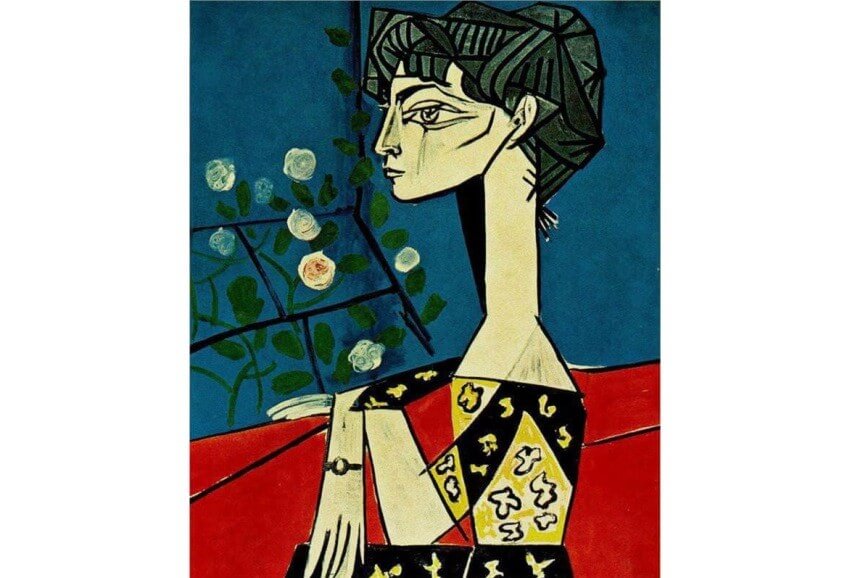
Pablo Picasso - Jacqueline with Flowers, 1954. Oil on canvas. 29 x 24 in. Musée Picasso, Paris, France. © 2019 Estate of Pablo Picasso / Artists Rights Society (ARS), New York
Featured Image:Pablo Picasso - Le Rêve (The Dream), 1932. Oil on canvas. 130 cm × 97 cm. Private Collection. © 2019 Estate of Pablo Picasso / Artists Rights Society (ARS), New York
All images used for illustrative purposes only
By Phillip Barcio






